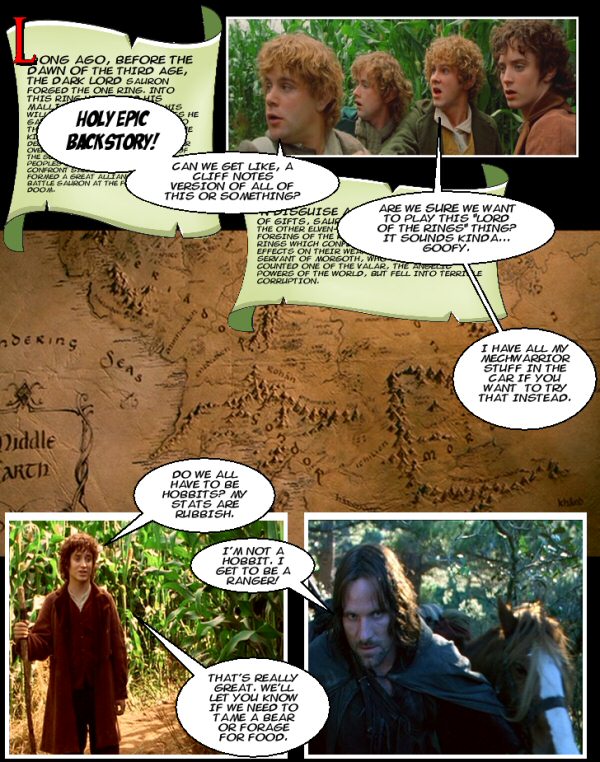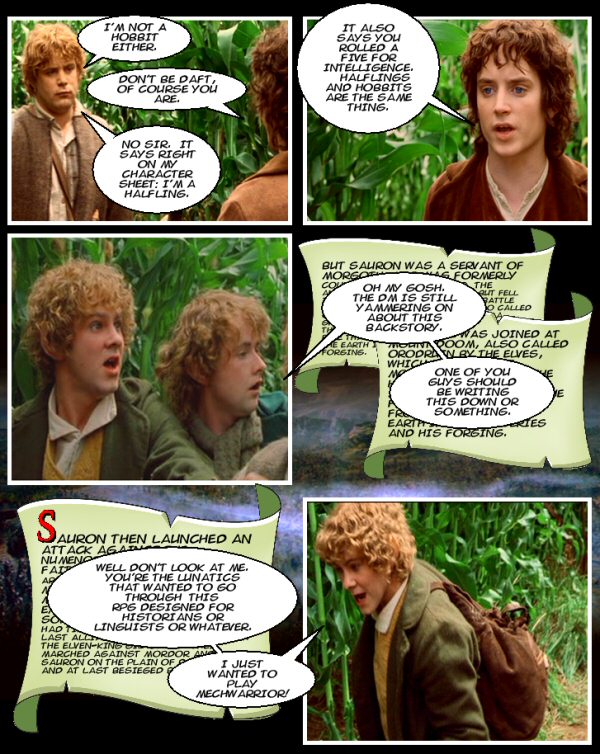Game designers are, let’s face it, responsible for most of the initial shouting and swearing that goes on around the table in general, and also some of the biggest hilarity before people actually gets into the game itself. That's right, this week I'm talking about the player character design process.
Depending on how people choose characteristics, both good and bad, will dictate how they play their character in game. Also, you’re giving the GM fuel at this point – the truly savvy GM listens to how people describe their characters, and how others discuss and react to the information they share.

Abilities and skills are interchangeable in the minds of players, but it’s important to understand when designing games that there are three sub types of designing a character. It’s key to explore a couple of systems before settling on how you’re handling this bit – you can either have something that’s really ‘rigid’ but actually generates the right range of characters for the game, or something really loose and give your players the chance to rely on luck and common sense.
Positive and negative are difficult to consider in terms of characteristics. So once you’ve generated the vital ‘statistics’, (whether bought or via dice roll), the next step is almost always to choose from a list of characteristics. Of course, for the game writer, it’s not as easy as ‘just picking’. Depending on the mechanic of the game, you’ll design it in one of several ways.
Both ways are basically based around XP though – the GM will give the gamers a pool of points to buy stats from. And this is the game designer part - you have to think about how your player is going to design the character they’re going to play. And to do this, you have to think about archetypes.

Archetypes are the stereotypical ‘meta’ characters that people can create. Warrior, mage, healer, rogue, etc. Each of these character types have strengths and weaknesses. This is your ability/attribute/skill set pool. So, you can create the characters, brain storm over the elements you think you might need, and playtest, playtest, playtest! And then, add a splash of personality. So, you’re a fighter and you’re good at it – you’re probably going to be an arrogant toad. So, add arrogance (and give that stat a consequence – you could add points back into the pool to buy something else, but it could mean that in certain rolls, you have a penalty. Positive stats cost more to buy, but add to rolls, or give automatic successes etc.)
There’s a final part to this – you need both the positive, and the negative. Without negative traits characters aren’t only one dimensional, but they’re difficult to play, and mostly unsatisfying. So, ensure that there’s some nasty in with all that nice.
D Kai Wilson-Viola is on FINAL EDITS for Glass Block and is genuinely wishing her senile cat would stop the pre-dawn chorus.

No comments:
Post a Comment